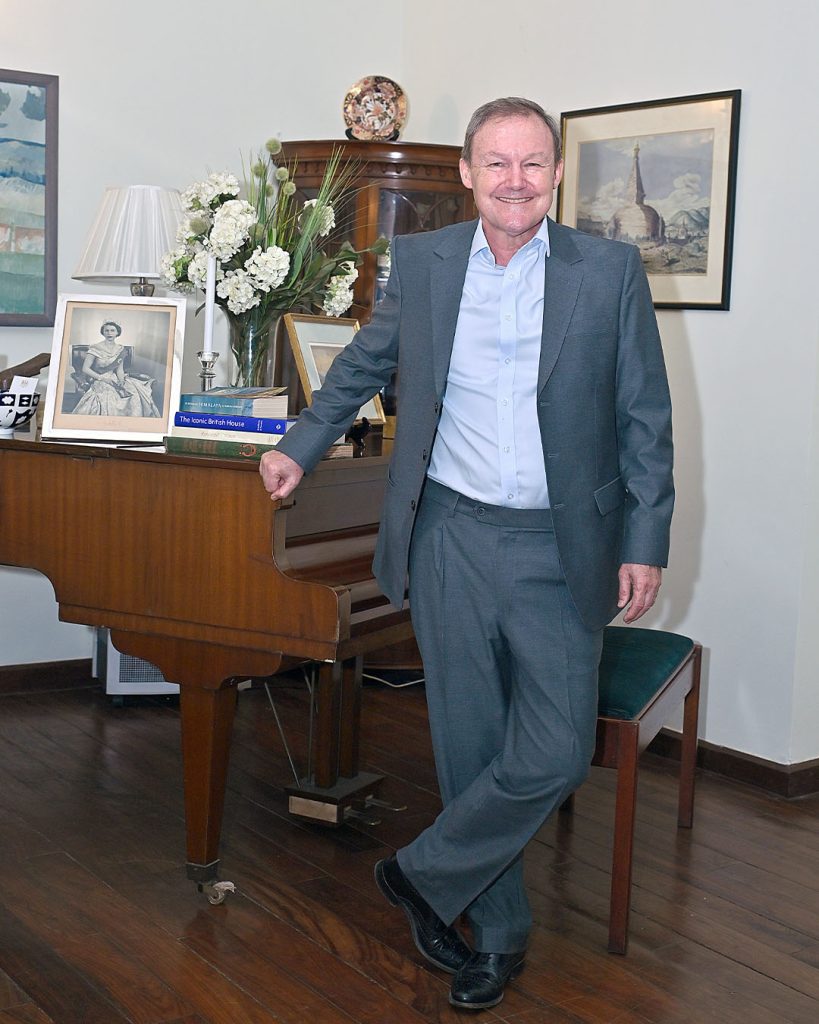
Few foreign diplomats have embraced Nepal with as much heart and soul as His Excellency Rob Fenn, the British Ambassador to Nepal. Since his appointment as the ambassador to the Himalayan nation in August 2023, he has celebrated his 22nd wedding anniversary at the sacred Janaki Temple in Janakpur, ridden his bike through the hills of Kathmandu, relished selroti with chiya, and joyfully spoke in Nepali across his social media. Doing that, he has made himself a part of Nepal’s vibrant tapestry, blending diplomacy with genuine cultural immersion.
H.E. Fenn previously served as the UK’s Deputy Head of Mission in Indonesia from 2018 to 2022. Moreover, he joined the Foreign, Commonwealth & Development Office (FCDO) in 1983 and subsequently held a variety of roles, with diplomatic assignments in Cyprus, Rome, and New York. He was also the British High Commissioner to Brunei from 2009 to 2013.
Since his arrival in Nepal, Ambassador Fenn has become one of the most active and popular ambassadors. Therefore, The Diplomat Nepal sat down with him to talk about Nepal-UK relations, opportunities in investment and trade, and his deeply personal experience of discovering and embracing Nepal.
I see it as a precious legacy. Our partnership has deep foundations. But we are building something modern.
The most rewarding chapter of my career. And the most fun I have ever had “at work”.
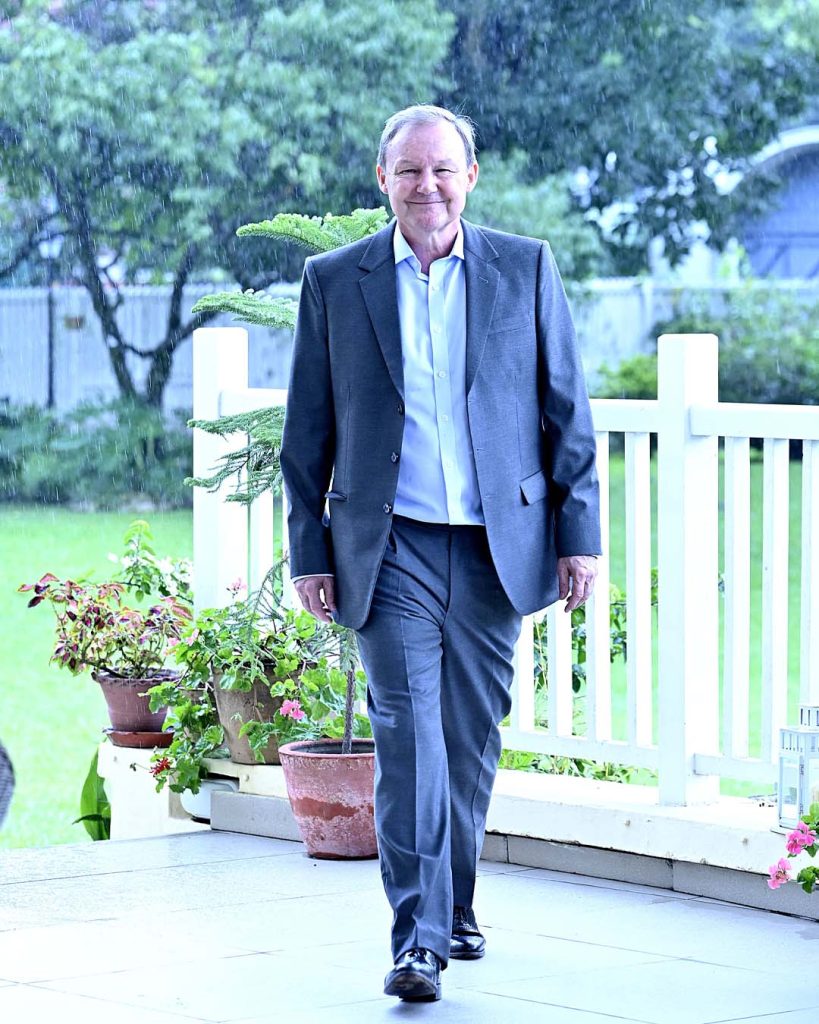
Brilliant. Ambassador Chandra Ghimire is a skillful exponent of economic diplomacy. He assembled a roomful of potential investors in Nepal, from the diaspora and beyond. And he brought knowledgeable speakers, such as Sushil Gyewali (Investment Board Nepal’s CEO), to explain the economic opportunities here.
Our overarching goal is to help Nepal connect with global capital markets, escape a low-employment paradigm and fulfil its whole potential, without damaging the things it is already famous for. Since that is also the goal of the government, you will find the UK active in most sectors of the National Plan, and collaborating with all Nepal’s development partners, bilateral and multilateral.
You bet! Our latest recruit from the UK is a digital expert. We aim to raise our game in the IT/Tech sector, developing both technical cooperation and trade.

Helping Nepal adapt to climate change and access climate finance is a top priority. We do this through our bilateral programme: Resilience, Adaptation and Inclusion in Nepal (RAIN); through our regional programme Climate Action for a Resilient Asia (CARA), under which we collaborate with ICIMOD; and through diplomatic support. For example, Baroness Hayman’s attendance at the recent Sagarmatha Sambaad.
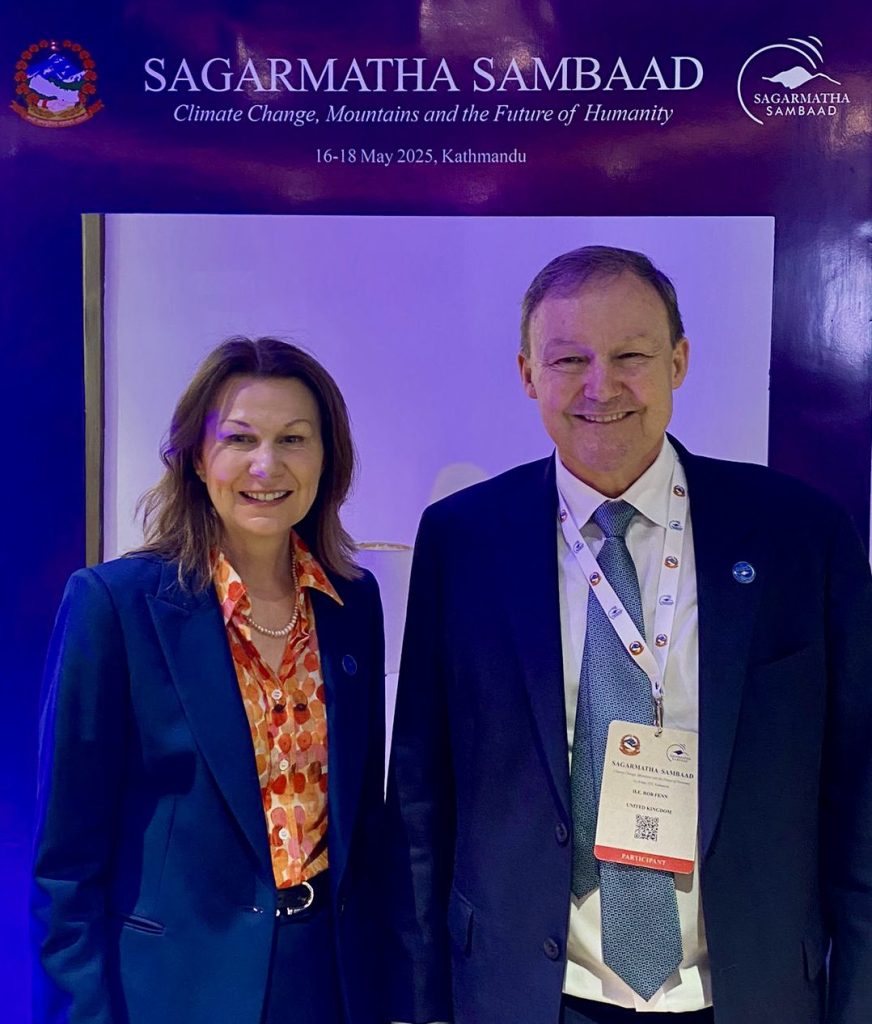
Protection of human rights starts from a high base: an admired constitution, vigorously defended by the Supreme Court, with separation of powers – between parliament and the executive – and freedom of speech. Like many countries, Nepal sometimes struggles to enforce these values, and like all post-conflict countries, Nepal is finding Transitional Justice the hardest test of all. Given all the socio-economic progress Nepal has made since the civil war, Nepal’s friends would like to see the country travel this “last yard”.
The Nepal / UK Tech Forum in London led to the creation of a bilateral Digital Working Group with an ambitious agenda; and useful meetings between the Investment Board of Nepal and UK Export Finance (UKEF). That was built on a UK-Nepal Business Forum in February, and a strong British showing at the National Investment Summit. All these initiatives reflect the UK Government’s “growth mission” and the work of the Kathmandu-based office of our Department of Business and Trade. Most recently, the UK government has simplified its Developing Countries’ Trading Scheme (DCTS). Countries eligible to trade with the UK without tariffs, such as Nepal, no longer need to prove their goods do not include components from countries which do face a UK tariff.
On the public sector side (ODA), in April, British International Investment (BII) took a $22mn stake in NMB Bank’s green bond (Nepal’s first international bond) – investment, which will reinforce the hydro sector. The Embassy has also recently unveiled our “Nepal in Business” programme, which seeks to invest capital and advice in medium sized enterprises, to help them grow and generate employment. On the truly private side, we hope that the Dolma Impact Fund will very soon be permitted successfully to exit its first venture capital fund in Nepal (in order to concentrate on its second and third, etc.), establishing Nepal’s reputation as a profitable destination for foreign investment.
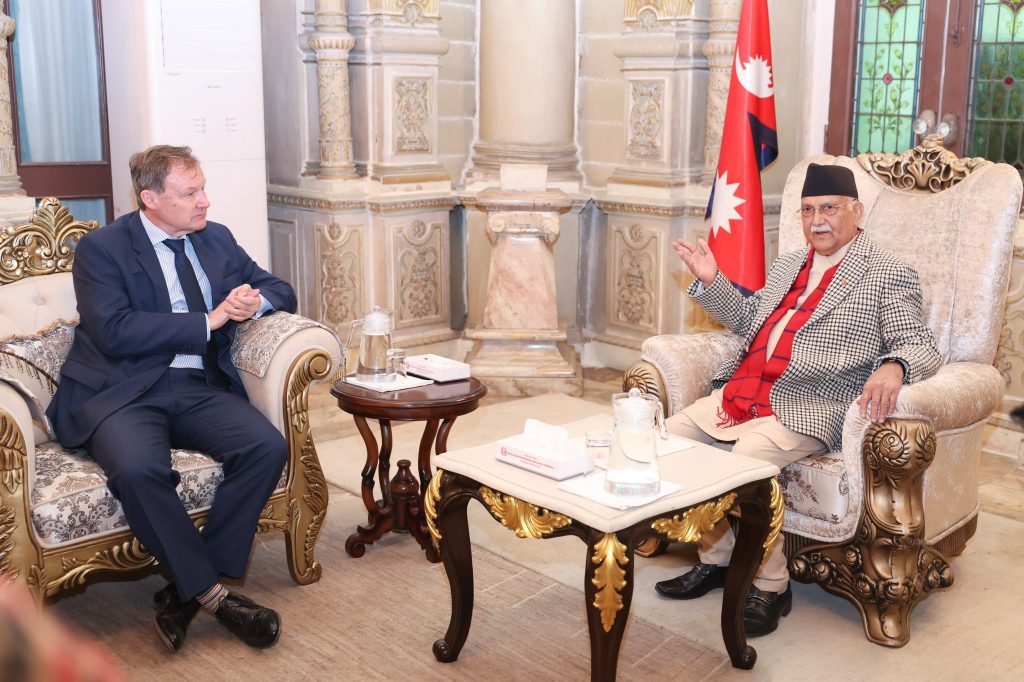
Inclusion is at the heart of all our work, in Nepal and globally. Here, we find fantastic collaborators in government and civil society. It’s hard to single out highlights, but our most recent innovation has been the launch – by the Embassy and UN Women – of a programme we call RIVA. On this platform, women and girls can network and collaborate, on their own agendas and on intersecting forms of exclusion, such as disability. The British Council also does a fine job, for example, by bringing the “Women of the World” (WOW) festival to Nepal. I’m also very proud of what my colleagues do in their own spare time to mentor (and be mentored by) female Nepali professionals.
Nepal has “more geography” than anywhere else, but ends up being experienced as a spiritual landscape. I continue to travel, and have now visited all seven provinces, including many trips to the three provinces which are priorities for our development partnership: Madhesh, Lumbini, and Karnali. Upper Mustang provided my best photographs; a helicopter trip to Namche Bazaar provided my best stories; and a visit to the Mahakali River crossing into India provided my most exciting glimpse into the future. Next stop, Dolpa. After all that, however, I expect my longest journeys will turn out to have been mental ones.
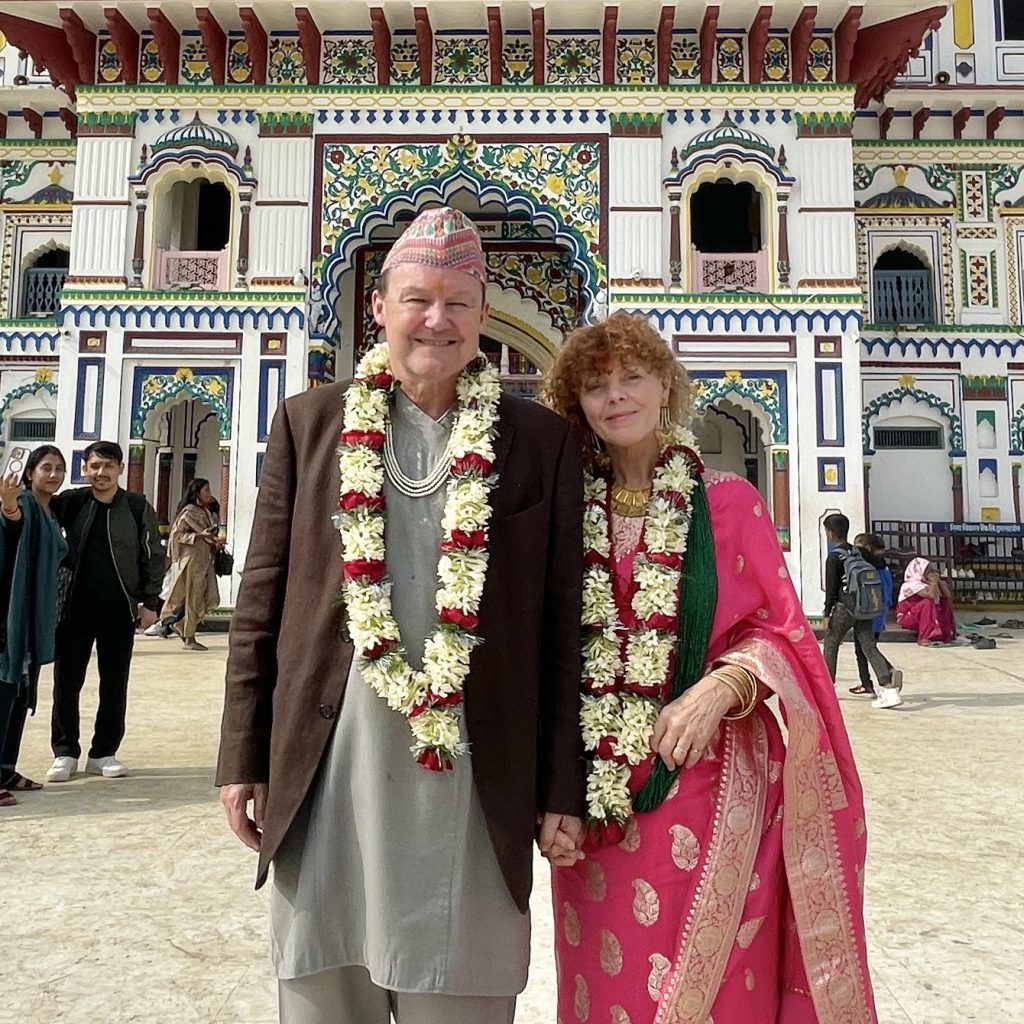
Nepali culture has deep roots in the past. Many of my friends know this is not their first incarnation. The Director of Shambhala parried a question at the Berlin Film Festival by saying that part of his film was probably inspired by a previous lifetime. It’s hard not to feel juvenile in such company. And yet, Nepalis’ ageless smiling faces and high levels of physical fitness can also make me feel very old.
In my experience, the best dish at a Nepali buffet is always at the very end of the table – by which time I have already filled my plate.
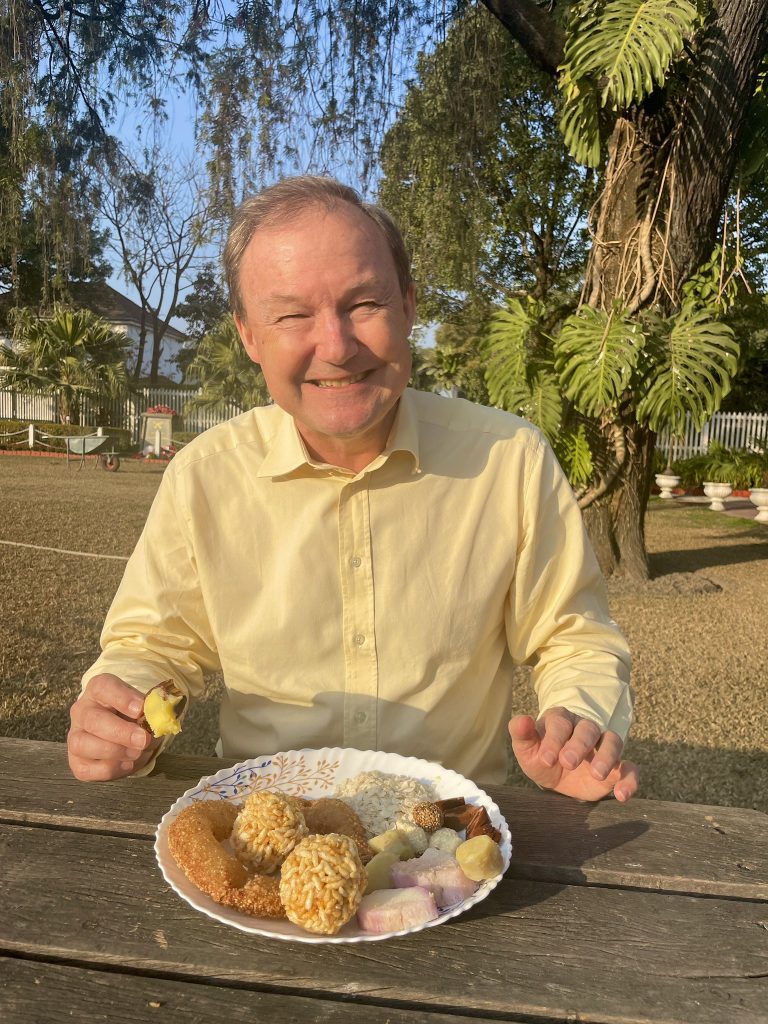
So many festivals. My family adores getting covered in paint at Holi. The complexity of Teej has also stayed with me, with its interplay of feminism and tradition. Tihar is simply uplifting. Who doesn’t like light? And, come to think of it, who doesn’t like to see half the population of Patan pull a ten-ton rain god round the city? But – if I had to choose – I would nominate one of those festivals, like Tharu New Year, or any of the pageantry in Bhaktapur, which I have been admitted to through the generosity of friends and would not have known about otherwise. That makes me feel that Nepal has “taken me into its confidence”.
Mero Euta Saathi Chha, by Sugam Pokharel. It’s a great song. And it captures something about the unique friendship between the UK and Nepal.

It depends, of course, on location and time of year. Sometimes the climate here is perfectly described by the word for weather itself: “Hawapani”. You get wind. Or rain. Or both! Nevertheless, in my personal experience, the weather here is preferable to that in the UK (even in Marpha, where the climate feels similar to that in UK, and the farmers grow “British vegetables”). On a good day, Kathmandu Valley feels like the “Garden of Eden”. On a bad day, I can’t breathe.
As the cliché goes, there are many Nepals. The country’s diversity is its highest common factor. What stands out for me, however, is that the creativity of many Nepali artists and artisans has a strong devotional component. Art and culture here is not so much “made” as “lived” (experienced in a myriad of ways, from private prayer or public performance). There is extraordinary attention to detail, as well as tolerance for improvisation and personal interpretation. Since it all takes time, collectors of Nepali art need patience.
A question for the British Council, to whom your readers should apply for details. But I work closely with the Council. Together, as it happens, we are engaged in an in-house audit of the people-to-people links which bind our countries together – and help conserve their heritage and traditions – more effectively than any government policy could. That said, the UK’s Department of Culture, Media and Sport funds cultural conservation projects.
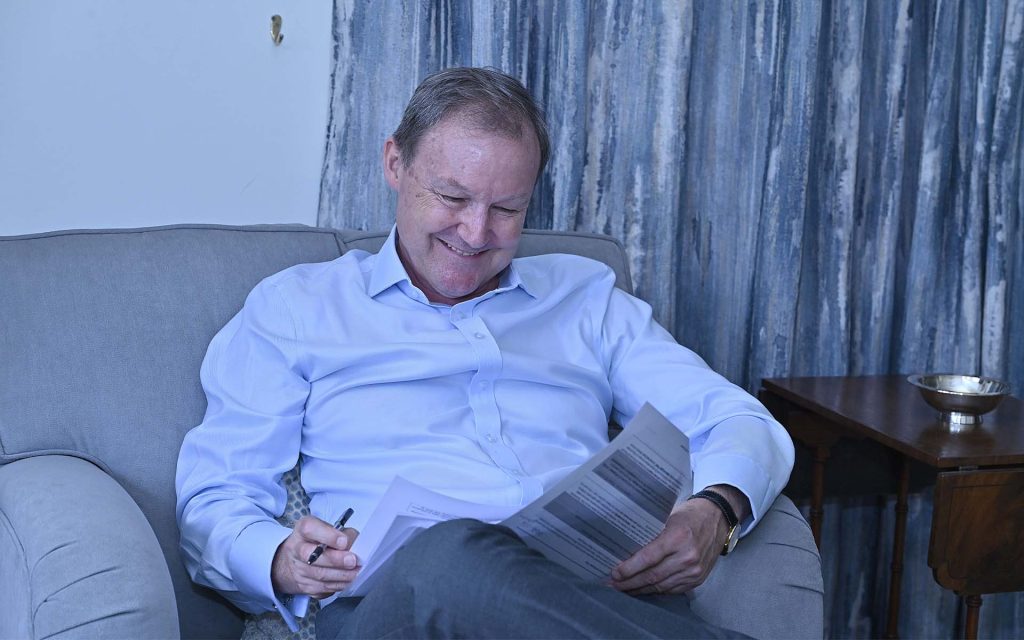
The current crop includes: a regional cookbook; a new take on Mithila art; materials to help bring back from the brink an almost extinct language, and – the one I most want to see for myself – an intergenerational dialogue in Dolpa on the subject of the built environment; helping young people speak up and old people listen. I would also include here the many programmes of nature conservation funded by the UK’s Environment Ministry (DEFRA), which have played a big part in Nepal’s biodiversity and conservation success story.